General Information
Figure 1 shows a pedestrian beam bridge.
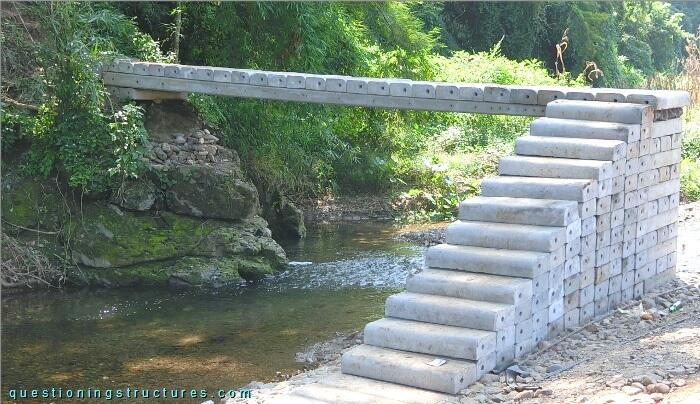
| Main span: | ≅ 7 m |
| Girder: | Prestressed concrete utility pole |
Utility Pole as a Beam Bridge Girder
Figure 2 shows the bridge.
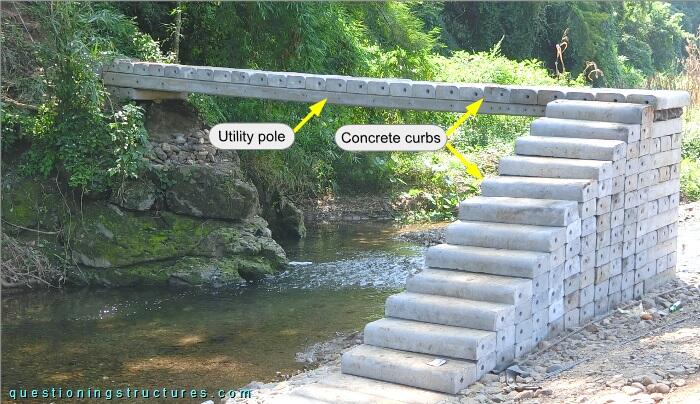
The deck, abutments, and entrance stairs are made of concrete curbs, while the girders are made of prestressed concrete utility poles. Figure 3 shows a bottom view of the bridge.
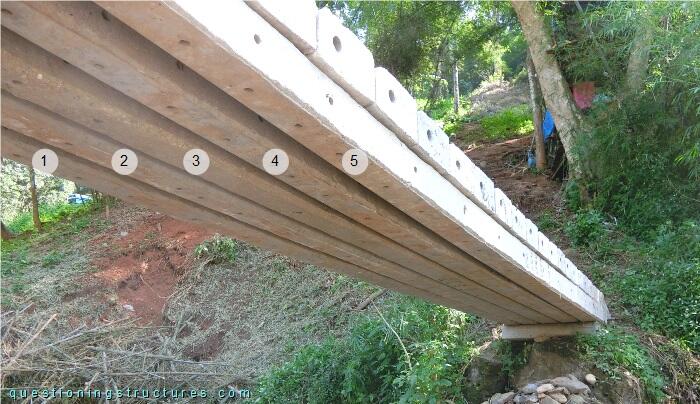
There are five utility poles (marked by the numbers) with a tapered cross-section. Figure 4 shows a back view of the bridge.
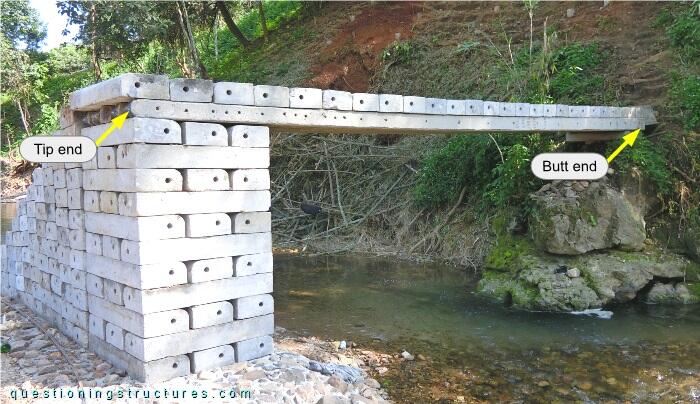
The tip end is about 12 cm x 12 cm, and the butt end is about 20 cm x 20 cm. The utility poles have transverse (horizontal and vertical) circular holes; they pass through the entire section and are placed over the entire length. Figure 5 shows a prestressed concrete utility pole.
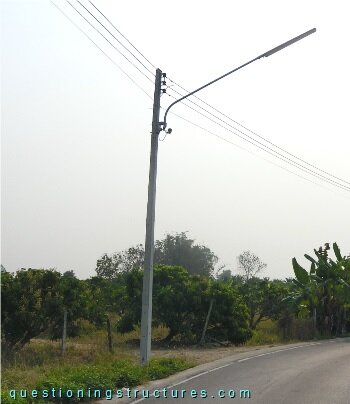
The base is embedded in the ground, while the top end region is connected to a street lamp and electric cables.